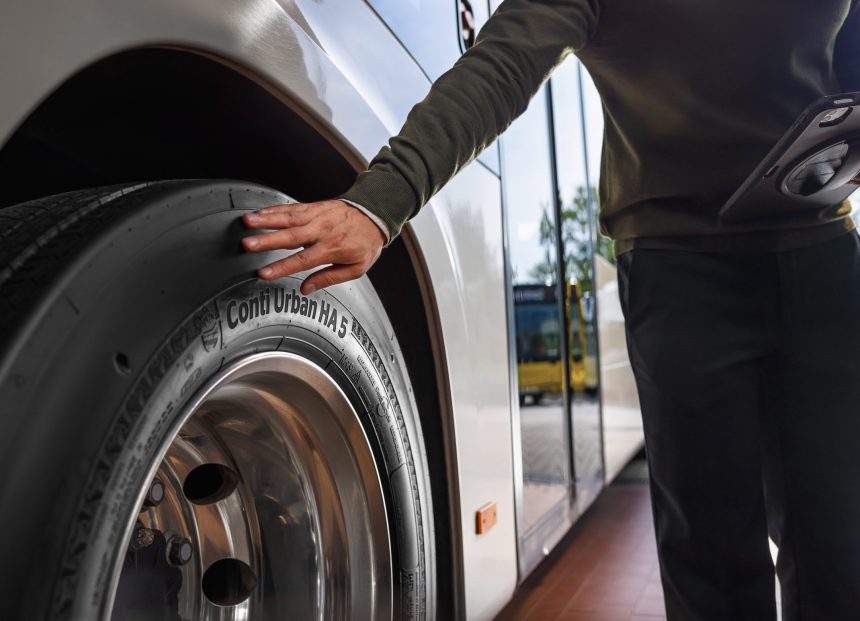Continental has launched its Conti Urban HA 5 tyre, which the manufacturer says represents a “significant advancement in urban tyre technology.”
It is designed specifically for urban applications and comes with what Continental describes as “adaptive tread technology” to deliver optimal traction and braking performance in wet and dry conditions, and a tread pattern that reduces perceived road noise for passengers and drivers.
Available from September at 275/70 R22.5, other sizes will come later, namely 245/70 R19.5, 265/70 R19.5, and 315/60 R22.5. A thickened sidewall is part of the design to mitigate kerb impacts.
The tyre comes with an enhanced tread cap and base compound, which Continental has formulated specifically for urban conditions. That will deliver higher mileage capability to reduce the frequency of replacement and cut overall CO2 emissions.
Rolling resistance has been improved from other products to maximise fuel efficiency, the manufacturer continues. It notes how that is particularly beneficial for fleets with electric vehicles.
The Conti Urban HA 5 further suits electric buses and their higher driveline torque and vehicle weights compared to diesel equivalents via its robust construction with advanced materials that can withstanding those additional demands.
The product is also compatible with the manufacturer’s ContiLifeCycle concept, which extends the casing’s life via retreading. It is also recyclable.
Optional are ContiConnect sensors. When fitted, they will give the Conti Urban HA 5 digital tyre monitoring to maximise performance.
Fleet managers receive precise pressure and temperature data, enabling what Continental says is more efficient maintenance and a reduction in operational costs. Digital integration supports predictive maintenance and helps to prevent unexpected downtime and minimise operating costs.
Says Continental Head of Product Development EMEA Hinnerk Kaiser: “The Conti Urban HA 5 has been developed with direct input from fleet managers and urban transport operators to address their most pressing needs.
“These insights have highlighted the critical importance of several key performance areas: High mileage, low rolling resistance, and advanced digital monitoring capabilities.”



























